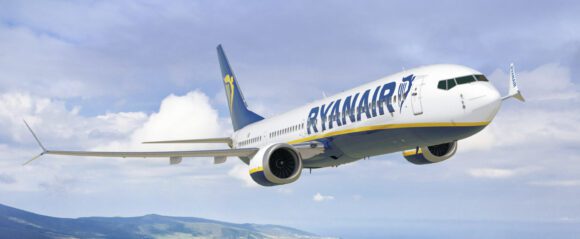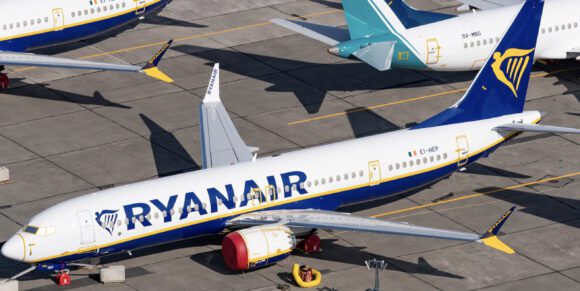Ryanair blames 6 percent lower fares due to excessive capacity in Europe for its Q3 FY2019 loss of €19.6m, down from a €105.6m profit the previous year. The Irish low-cost carrier expects HY2 fares to be on average 7 percent lower compared to last year, Ryanair said at its Q3 webcast presentation on February 4. As previously announced, its FY2019 guidance has been reduced to €1.0-1.1bln.
Traffic has been up 8% in Q3, to 32.7m. Ancillary revenues rose 26% to €557m, full quarter revenues +9% to €1.5bln. Although oil prices dropped over the months, fuel costs were still up 32% over the three-month period. Unit costs were up 6% thanks to crew training and 20% higher staff costs after Ryanair reached agreements with German cockpit crew and Spanish cabin crew unions.
To reduce costs Ryanair has closed bases in Eindhoven (The Netherlands) and Bremen, Niederrhein, and Hahn (Germany), citing lower traffic as another reason. In the webcast, Michael O’Leary didn’t say anything about the social conflict at Eindhoven, where pilots and cabin crew were laid-off despite a court ruling requesting Ryanair to offer them jobs under Dutch law.
Ryanair claims unit costs per passenger of €27 gives it an edge over any of its competitors, €13 better than its nearest rival Wizz. The Irish airline expects to keep this advantage or even improve on that by introducing the Boeing 737 MAX 200, which with 4% more seats and 16% lower fuel costs should drastically improve costs. The first five aircraft will be delivered between April and June, but by Summer 2020 the MAX 200-fleet should count 54 aircraft or 10% of the fleet to give Ryanair a real cost advantage while generating more ancillary revenues with more passengers per aircraft.
O’Leary said he wished to order more MAXs on top of the 175 firm and 35 options currently placed, but this depends on slots becoming available with Boeing. This might happen as O’Leary expects airlines to defer orders or go bust, as has happened to a few in Europe over the last months.
Michael O’Leary has signed-up for another five years – at a reduced salary and bonus – with Ryanair and will become Ryanair’s first Group CEO, as the airline moves to a new corporate structure. It copies the IAG-model with a group holding and four subsidiaries, Ryanair DAC in Ireland, Ryanair Sun in Poland, Ryanair UK and LaudaMotion. Ryanair Air will get its own CEO by September.
David Bonderman will continue as chairman of the board until September 2020 but will be succeeded by current deputy Stan McCarthy.
LaudaMotion heavily loss-making in year 1
The new structure confirms that Ryanair has no intention to integrate LaudaMotion within the Ryanair-brand but keep it flying as an independent airline based in Vienna. The start-up year has been heavy loss-making, with one-off costs (specifically aircraft leases to Lufthansa) of €150m expected to be reduced by €10m by the end of Q4. A projected two million increase in passengers, made possible by growing the fleet to 19 Airbus A320ceo’s this Summer and 25 in 2020, should improve results. LaudaMotion, which was formed out of airBerlin late 2017 and became a 100% Ryanair subsidiary in December 2018, is expected to be loss-making between €50m and break-even in 2019 and become profitable in 2020. A factor in this is the reduced lease-rates of A320s, O’Leary said.
Ryanair is very worried about a no-deal Brexit, which could affect its operations out of the UK. For this, it has secured a separate AOC for Ryanair UK to operate on three UK-routes. Yet, the airline will open a new base at London Southend, which is to become a major hub for its competitor Flybe/Connect Airways.
Views: 0




